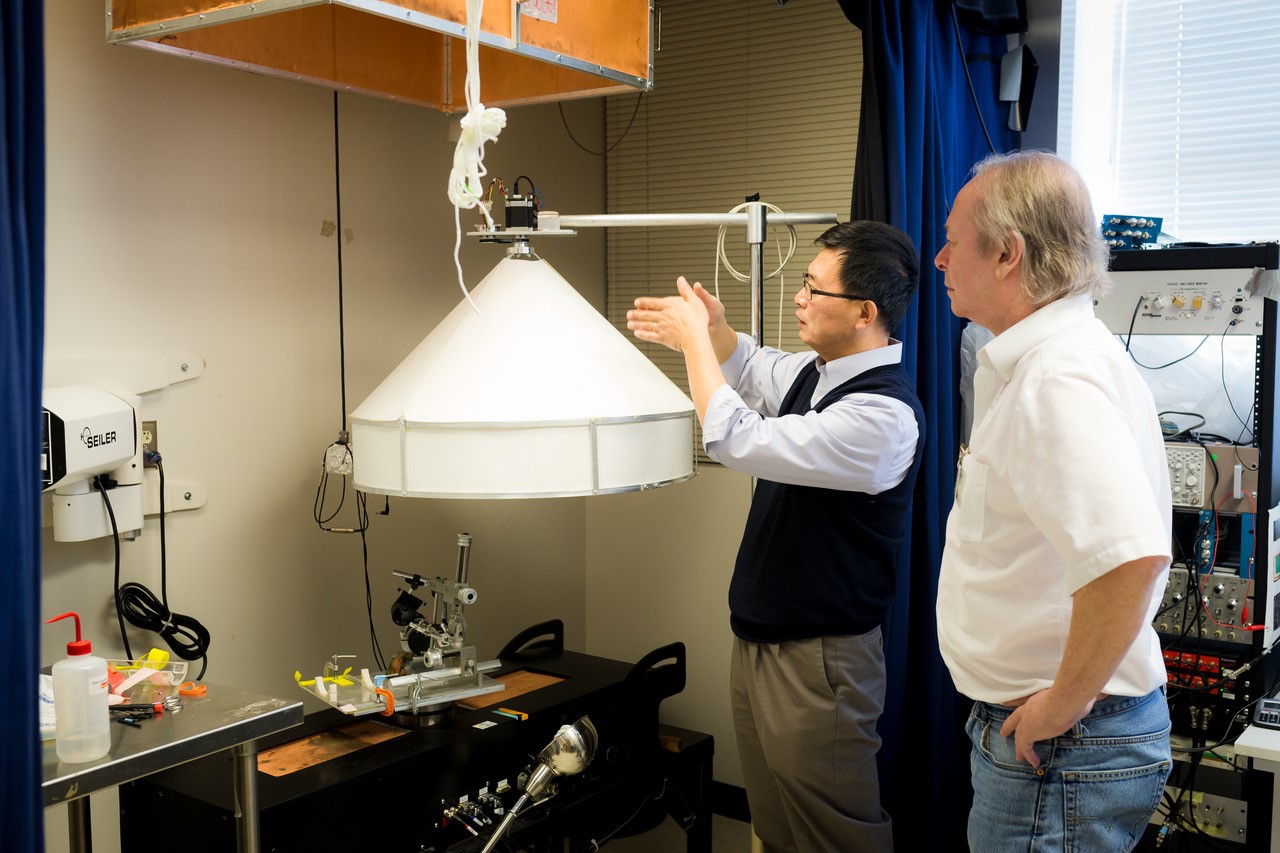Vestibular Sciences
Sensorimotor Integration in Health and Diseases
The Zhou lab in the Department of Otolaryngology - Head and Neck Surgery
Selected Project: Neural mechanism of sound activation of the vestibular system The overall objective of the project is to provide the neural basis for human VEMP testing (vestibular evoked myogenic potentials) by examining input-output functions of vestibular afferent responses to clinical VEMP stimuli. Since the discovery of cervical neck muscle myogenic potentials in 1992, there has been a rapid growth of VEMP publications and clinical use. Investigators worldwide have used the VEMPs to characterize vestibular deficiencies related to aging and a variety of peripheral and central vestibulopathies, including Tullio/superior canal dehiscence syndrome, vestibular neuritis, Ménière's disease and tumors. The application is motivated by two basic facts. First, there is a need of rigorous animal basic science research on the neural basis for VEMP testing. Second, our studies clearly demonstrated that the canal as well as otolith afferents responded to VEMP stimuli. Since neck muscles receive inputs from both the canals and the otoliths, our results cast doubt on the current interpretation of VEMP testing, and call into question which vestibular organs are responsible for VEMP responses under various experimental and clinical conditions-knowledge important for clinical design of discriminating VEMP tests and interpretation of clinical results. In the project, we examine single unit vestibular afferent responses from identified organs to air-conducted and bone-conducted sound stimuli that are used clinically. Furthermore, we employ intra-axonal labeling to anatomically identify the end organs that are innervated by sound sensitive vestibular afferents. We determine if certain sound stimuli preferentially activate specific vestibular end organs. Our preliminary results support this idea and have shown that sound stimuli with certain intensity and frequency preferentially activate the otoliths vs. the canals. The results from the proposed experiments would lead to optimal VEMP testing protocols and interpretive guidelines.
The overall objective of the project is to provide the neural basis for human VEMP testing (vestibular evoked myogenic potentials) by examining input-output functions of vestibular afferent responses to clinical VEMP stimuli. Since the discovery of cervical neck muscle myogenic potentials in 1992, there has been a rapid growth of VEMP publications and clinical use. Investigators worldwide have used the VEMPs to characterize vestibular deficiencies related to aging and a variety of peripheral and central vestibulopathies, including Tullio/superior canal dehiscence syndrome, vestibular neuritis, Ménière's disease and tumors. The application is motivated by two basic facts. First, there is a need of rigorous animal basic science research on the neural basis for VEMP testing. Second, our studies clearly demonstrated that the canal as well as otolith afferents responded to VEMP stimuli. Since neck muscles receive inputs from both the canals and the otoliths, our results cast doubt on the current interpretation of VEMP testing, and call into question which vestibular organs are responsible for VEMP responses under various experimental and clinical conditions-knowledge important for clinical design of discriminating VEMP tests and interpretation of clinical results. In the project, we examine single unit vestibular afferent responses from identified organs to air-conducted and bone-conducted sound stimuli that are used clinically. Furthermore, we employ intra-axonal labeling to anatomically identify the end organs that are innervated by sound sensitive vestibular afferents. We determine if certain sound stimuli preferentially activate specific vestibular end organs. Our preliminary results support this idea and have shown that sound stimuli with certain intensity and frequency preferentially activate the otoliths vs. the canals. The results from the proposed experiments would lead to optimal VEMP testing protocols and interpretive guidelines.


